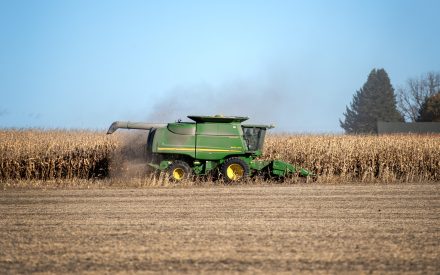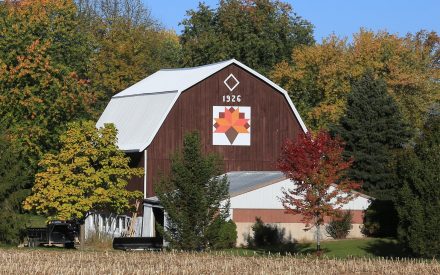EDA University Center

Since 2016, the EDA University Center has been a joint effort by the US Department of Commerce’s Economic Development Administration and the Division of Extension to increase the availability of Wisconsin-applicable data and research to the state’s municipal, county, and tribal governments, along with the economic development community. The EDA University Center works in four main areas.
COVID-19 Economic Recovery
The EDA University Center received a CARES Act Economic Recovery grant and has been focusing its research and outreach efforts on helping communities recover from the impact of the COVID-19 pandemic. Some of our major activities include:
Expanded Capacity to Meet COVID-19 Research & Data Needs: Professors Gail Huycke and Christopher Stark joined the EDA University Center team to help deepen applied research related to expanding broadband access. Because of her association with the EDA-UC and the CARES Act grant, Professor Huycke was asked to serve on Governor Ever’s Task Force on Broadband. Professor Chris Stark has been working on access in Wisconsin’s communities.
Dr. Tessa Conroy received additional funding through the CARES Act to dedicate a greater amount of time to economic recovery, leading the effort to complete Broadband and the Wisconsin Economy, a companion policy brief Strategies and Policy Options for Broadband Access Across Wisconsin, and a series of factsheets.
Economic Impact Survey – Wisconsin Residents: From September through late October (2020), we fielded the first wave of a survey of a random sample of Wisconsin residents to better understand the pandemic’s effect on individual household finances and resiliency, along with the effect of sudden COVID-19 related changes on the household need for broadband, childcare, and other necessary support for full participation in the economy.
Economic Impact Survey – Municipalities & Economic Development Organizations: The impact of COVID-19 on municipalities has been considerable. Through the CARES Act, the EDA University Center is preparing to field a survey of municipalities and economic development organizations.
Homegrown: Entrepreneurship in Your Community: Research indicates entrepreneurial networks are weak in many parts of rural America. It is expected that already weak entrepreneurial supports will be further eroded by COVID-19. In response, the EDA University Center is offering a multi-day, research-based curriculum designed by the EDA University Center’s lead researcher, Dr. Tessa Conroy, in partnership with Dr. Sara Low at the University of Missouri. Targeted at local stakeholders, the program aids participant communities in creating a supportive network in rural areas so that when entrepreneurs are considering starting a business, they receive support from community institutions and leaders.
Business Development Technical Assistance: Through the CARES Act, Extension is accelerating its efforts to provide direct help to small entrepreneurs, earliest stage entrepreneurs, solo entrepreneurs, and smaller agricultural operators. GrowthWheel business counseling will be offered by ten certified Division of Extension educators.
QuickStart Social Media Marketing: The COVID-19 pandemic has underscored the importance of social media sites, such as Facebook, in helping small businesses maintain and serve their customers. The EDA University Center partnered with 3Rhino Media, a nationally recognized social consultant, to provide a three-course series to small businesses. In total, 41 businesses registered for the first wave of QuickStart Social Media Marketing courses in November 2020, and there plans to offer the courses periodically throughout the COVID-19 economic recovery period.
Research Activities
WIndicators: The EDA University Center publishes a frequent, short-form series called WIndicators that looks at data surrounding a range of issues from business expansion to the role of foreign exports in the state’s economy to childcare as an economic development strategy and the role of immigration in entrepreneurship.
Wisconsin Economy Series: The Wisconsin Economy Series is a joint effort of the EDA University Center and the Department of Agricultural and Applied Economics. This series is an in-depth look at critical issues in Wisconsin, including broadband, manufacturing, sources of job growth, and effects of research and development investment in the state.
Economic Reports: Our Economic Reports address episodic issues in the economy and detail methods for community-based economic development research. For example, Slow Churn: Declining Dynamism in America’s Dairyland discusses the birth and death rates for Wisconsin business startups and the implication for the state economy. A Trade Area Analysis of Wisconsin Retail and Service Markets provides instruction on how to use publicly available data to assess the local retail market.
Badger Economy Survey: The Badger Economy Survey is a biennial survey of Wisconsin and its neighboring Great Lakes states. The survey explores attitudes toward a rotating number of economic development issues faced by states in the Upper Midwest, along with the experiences of individuals as they encounter issues related to child care, student loans, job searches, and other common events that impact regional residents.
Outreach Activities
The Center holds major meetings annually that bring together stakeholders in each region to examine research on issues they have identified as critical to economic development. Meetings are held as in-services, summits, or forums, depending on the preference of the economic development partners. Attendance ranges between 60 and 300 individuals, drawn from local, state, and national elected leaders, economic development professionals, government agencies, and business leaders.
Assistance for Community Economic Development
The EDA University Center researchers are frequently called on to directly assist communities or economic development partners. For example, Kristin Runge recently assisted the Village of Waunakee in conducting a year-long assessment and community engagement on the issue of affordable housing. Tessa Conroy is involved in a project supporting entrepreneurs of color in the Fox Valley region of the state through research, developing a co-working space, and identifying grant opportunities. Matt Kures has been working with several partners to identify and understand the implications of commuting and stretch commuting patterns in their regions. Steve Deller has been leading a working group to identify community-based approaches to addressing the lack of affordable housing across the State of Wisconsin.
Recent Publications
Do Local Fiscal Decisions Impact Economic Growth: The Case of Wisconsin
This study revisits how local fiscal policies, specifically taxing and expenditures, affect economic growth. Using a panel (1990–2020) of Wisconsin general-purpose governments, we estimate a fixed effects variable parameter model and find that taxes have a dampening effect on the growth rate in income prior to the Great Recession but a positive effect over recent years. We also find that the impact of taxes on growth varies across community income levels. For lower income places taxes have a dampening effect on growth, but a positive effect in higher income areas. The results suggest that the impact of fiscal policies on economic growth vary over time and income levels. As such, blanket statements that high taxes harm the business climate and hence economic growth are generally not supported by the research.
Women farmers and community well-being under modeling uncertainty
We examine the association between woman farmers and community well-being using U.S. county-level data. We address modeling uncertainty around three measures of community well-being by using a spatial Bayesian model averaging approach and find that a higher share of farms operated or owned by women in a county is associated with higher rates of new business formation, longer life expectancies, and lower poverty rates. The results are consistent with a growing literature that finds women business owners approach their businesses more holistically, with positive community spillovers.
The Impact of Fiscal Rules on Local Debt: Credit Ratings, Borrowing Costs, and Debt Levels.
This timely Research Handbook explores the handling of city and municipal finances in the 21st century. It examines the impact of the Great Recession and COVID-19 pandemic on cities and municipalities, highlighting strengths, weaknesses, and avenues for future progress in city and municipal financial management.
Rural Pharmacies an Overlooked Piece of the Rural Health Care Milieu
The provision of health services in both rural and urban communities is complex and composed of many pieces. One particular part of the rural health care mix that has gathered significant attention in both the popular press and academic literature (e.g., Kaufman, et.al. 2016; Kissi, Walston, and Badar 2021) is the alarming rate of rural hospital closures. Headlines such as CNN’s July 31, 2021 story entitled “[h]ow the pandemic killed a record number of rural hospitals” or Becker’s Hospital Review February 18, 2022 story entitled “[s]taffing crisis, payment cuts put 453 hospitals at risk of closure” are increasingly common.
I will survive…but at what (opportunity) cost?: A spatial analysis of business survival and Jacobian externalities
Using insights gained from Jacobian externalities, we consider how a more diverse economic industrial base relates to business survival rates. While a low survival rate is often perceived negatively among policy-makers, evidence suggests that business exit is part of a dynamic and robust economy. The high opportunity cost of continuing with a struggling business in a more diversified economy may ultimately sway entrepreneurs with less competitive ventures to exit leading to lower survival rates. We model average 5-year survival rates at the county level annually from 1990 to 2012 employing a spatial panel Durbin specification. The data support the central hypothesis that more diversified economies increase the opportunity costs of operating an underperforming new business, thereby lowering survival rates.
Growth in Commuting Patterns and Their Impacts on Rural Workforce and Economic Development
Residential and employment locational decisions for working households are frequently commingled. Numerous economic and social factors like job accessibility, wage differentials, housing markets, travel time, trip-chaining opportunities, dual employment, and other quality-of-life considerations influence where a household ultimately chooses to reside relative to places of employment. These choices in turn shape commuting patterns within a region. Using the U.S. Census Bureau’s LEHD Origin-Destination Employment Statistics (LODES), the authors explore longitudinal changes in the growth of commuting patterns based on commuters traveling 50 miles or more between their place of residence and place of employment for counties in Midwestern states from 2002 to 2019. The authors find that the rate of commuters traveling 50 miles or more appears to have increased in rural areas across several periods and regions. Thus, rural communities concerned about labor supply constraints must take into consideration more expansive geographic labor markets and approach labor force development in partnership across local economic development institutions. In essence, the growth in commuting sheds requires stronger regional partnerships to address the issue.



















